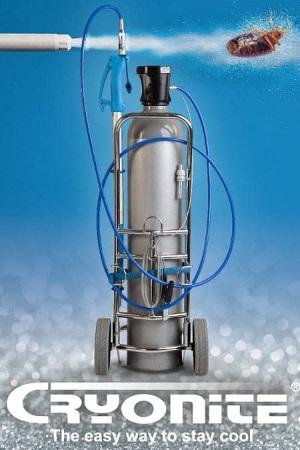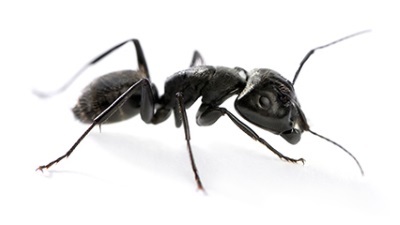Top Guidelines Of Pest Control Chicago
Top Guidelines Of Pest Control Chicago
Blog Article
The 7-Minute Rule for Pest Control Chicago
Table of ContentsLittle Known Facts About Pest Control Chicago.3 Easy Facts About Pest Control Chicago ExplainedThe Only Guide for Pest Control ChicagoPest Control Chicago Can Be Fun For EveryoneNot known Factual Statements About Pest Control Chicago The Best Guide To Pest Control Chicago
Planting or collecting a crop prior to (or after) a parasite is present minimizes insect damages by evasion. Capturing and calculating a pest's expanding level days can assist with preparing around a parasite's lifecycle. Damage resistance can occasionally be attained by planting a plant early so that the plants are stronger, extra resistant, and much more tolerant to damage by the time insect bugs exist.
By creating a tiny, controlled room that the parasites choose, it is feasible to divert parasites far from the primary plant. 2 strategies for this are catch cropping and strip harvesting. is planting a recommended host plant of an insect pest near the primary crop that is to be secured.
If needed, the bugs can after that be eliminated in the trap plant. Trap crops can be any types that the pest preferseven coincide varieties as the primary crop - Eco-friendly pest control Chicago. If the catch plant is the very same varieties as the main crop, it should be planted at once that will best tempt the parasite far from the key plant
Not known Facts About Pest Control Chicago
 This technique works when gathering a catch plant since it keeps some habitat for the pest. Therefore, the bug does stagnate to discover new habitat in a surrounding higher worth or even more susceptible crop. https://misty-telephone-4d6.notion.site/Bug-Removal-Experts-in-Chicago-Your-Guide-to-a-Pest-Free-Home-10051bd1fef380b08539ca80925d28de?pvs=4. The strategies already stated concentrate on reducing crop exposure to insect parasites, but it is additionally possible to minimize yield loss also when insect damage takes place
This technique works when gathering a catch plant since it keeps some habitat for the pest. Therefore, the bug does stagnate to discover new habitat in a surrounding higher worth or even more susceptible crop. https://misty-telephone-4d6.notion.site/Bug-Removal-Experts-in-Chicago-Your-Guide-to-a-Pest-Free-Home-10051bd1fef380b08539ca80925d28de?pvs=4. The strategies already stated concentrate on reducing crop exposure to insect parasites, but it is additionally possible to minimize yield loss also when insect damage takes placePlant them effectively and maintain the plants healthy by very carefully sprinkling, fertilizing, and pruning them. If an insect or illness creates unacceptable damages in spite of preventative initiatives, pick an effective management technique that will certainly have the least amount of impact on other living animals and the atmosphere.
The 10-Second Trick For Pest Control Chicago
 Search for symptoms the plant shows as an outcome of bug activity. Analyze your plants commonly. Identify your plants to make sure that the twisted fallen leaves, uncommon coloration, or strange-looking structures you see are not a typical part of the plant. Attempt to eliminate site-related problems by ensuring that the dirt kind, drainage problems, fertility level, and various other environmental conditions agree with for the plant.
Search for symptoms the plant shows as an outcome of bug activity. Analyze your plants commonly. Identify your plants to make sure that the twisted fallen leaves, uncommon coloration, or strange-looking structures you see are not a typical part of the plant. Attempt to eliminate site-related problems by ensuring that the dirt kind, drainage problems, fertility level, and various other environmental conditions agree with for the plant.Pests and mites commonly are related to particular plants, and they adhere to certain growth and actions patterns as the period proceeds. Use reference publications from the library or yard facility to determine parasites. If you can not find an accurate description there, seek advice from someone in your regional expansion workplace. Find out about the pest's life process, behavior, and natural adversaries.
If so, an application of a nonselective insecticide could kill them, permitting the pest population to rebound uninhibited by predators and parasites, which may have been supplying substantial control. If a control is needed, think about physical or biorational techniques initially. If they are unavailable or unwise, you may need to meticulously utilize a traditional chemical control.
The smart Trick of Pest Control Chicago That Nobody is Discussing
 Some aphids and termites can be knocked off by splashing the plant with water. You can use traps to capture certain parasites, and barriers to secure plants from insect strike or disease infection.
Some aphids and termites can be knocked off by splashing the plant with water. You can use traps to capture certain parasites, and barriers to secure plants from insect strike or disease infection.In some cases, the best solution may be physically getting rid of the plant and changing it with one that will certainly not be affected by the pest or disease. The first team consists of living microorganisms that can eliminate the bug.
An read review example of an approach that makes use of a normally happening biochemical is the microorganism Bacillus thuringiensis (Bt). Bt has a healthy protein that is toxic to particular insects, yet safe to other organisms.
Getting My Pest Control Chicago To Work
When the sensitive bug parasite feeds upon the sprayed fallen leaves, it will ingest the protein and be killed. Conventional chemicals are made use of only as a last option in an IPM program, yet occasionally are one of the most reliable ways of control. To have the best effect, these products require to be applied on a details component of the plant when the pest is most prone.
Oftentimes, environmentally risk-free chemicals such as gardening oil or insecticidal soap work options - https://anotepad.com/notes/257phjjy. Once more, applications should be timed carefully to have the best effect on the parasite insect population. Because they have no residual activity after they have actually dried, soaps and oils are generally the option that is the least turbulent to populations of useful microorganisms
These words, from least poisonous to most harmful are: "care," "caution," and "threat." Utilize these words as standards to help you select the least unsafe material among the effective alternatives. For a lot of landscape parasites, you need to think about chemicals in only the initial two classifications. Some chemical solutions can be applied only by applicators with unique training and that are licensed by the state's department of agriculture.
Pest Control Chicago Fundamentals Explained
Refer to the Woody Ornamental Insect, Mite, and Condition Monitoring Guide, published by Penn State Extension, or to another current referral for a checklist of products that are signed up for use on plants in your state. Review the tag to make sure that you have chosen a product that works versus the parasite you have actually determined, and select your timing based on expert suggestions.
Report this page